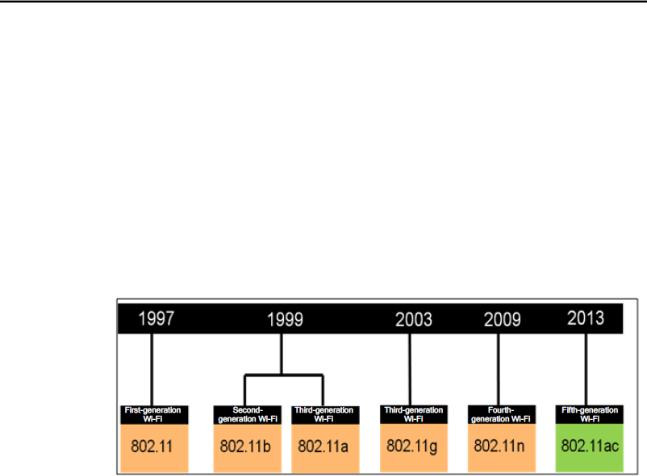Huawei AP4050DN User Manual

Huawei CloudCampus WLAN 802.11ac Wave 2
Technology White Paper

WLAN 802.11ac Wave 2 Technology White Paper |
Abstract |
Abstract
Since the first-generation 802.11 standards were released in 1997, Wi-Fi has achieved great developments and has become popular in the past 22 years. Nowadays, 802.11ac is released, greatly promoting the development of 802.11 standards. 802.11ac is coming to market in two releases: Wave 1 and Wave 2. This document describes 802.11 Wave 2 and its key features.

WLAN 802.11ac Wave 2 Technology White Paper |
Contents |
|
|
Contents
Abstract......................................................................................................................................... |
i |
1 Overview..................................................................................................................................... |
1 |
2 Implementation ........................................................................................................................ |
1 |
3 Key Features of 802.11ac Wave 2 .......................................................................................... |
5 |
3.1 Wider Channel Bonding..................................................................................................................................... |
5 |
3.2 MU-MIMO............................................................................................................................................................ |
7 |
4 Customer Benefits ................................................................................................................. |
10 |
A Acronyms and Abbreviations............................................................................................... |
12 |

WLAN 802.11ac Wave 2 Technology White Paper |
1 Overview |
1 Overview
Background
Since the first-generation 802.11 standards were released in 1997, Wi-Fi has achieved great developments and has become popular in the past 22 years. Nowadays, Wi-Fi becomes the first choice for an increasing number of users to access the Internet, and tends to replace the wired access. To meet requirements of new service applications and reduce the gap with wired network bandwidth, each generation of 802.11 standards among four generations of Wi-Fi systems (801.11, 802.11b, 802.11a/g, and 802.11n) greatly improves the Wi-Fi rate. In the fifth-generation 802.11 standards, the Wi-Fi rate improvement is undoubtedly a highlight in the industry.
Figure 1-1 802.11 standard evolution
The wired Ethernet and applications drive 802.11ac development. As wired Ethernet GE access gradually becomes the mainstream, Wi-Fi needs to provide good user and service experience. In practice, 802.11n products face the following challenges:
Large-bandwidth application
Large-bandwidth applications are widely used in the Wi-Fi field:
−Apple iClound service synchronization
−YouTube video services
WLAN 802.11ac Wave 2 Technology White Paper |
1 Overview |
−Vine (Twitter) video shooting and sharing application services
−Video conference services transferred from fixed devices to mobile devices
−Video services for product and solution promotion by more and more enterprises
These applications require higher Wi-Fi bandwidth. As predicted by Ericsson, video traffic on mobile networks will increase by 60% every year until the end of 2018. In 2018, video traffic will account for half of global mobile data traffic.
Access from a large number of STAs
−Facing the BYOD development trend, an employee may have two or more Wi-Fi STAs, each of which consumes network resources.
−In football fields, new product release conferences, or classrooms, concurrent access from a large number of users poses a great challenge to 802.11n products.
−As there is more wireless access and fewer wired access, an increasing number of STAs use Wi-Fi.
3G/4G offload
In the case of an explosive increase of data services in the cellular system, more traffic is offloaded to Wi-Fi networks to reduce the load of the cellular system. Wi-Fi shoulders the crossbeam as an "N" network. Wi-Fi networks are required to provide larger capacity and access for more users.
To meet the preceding requirements, the fifth-generation 802.11 standard (802.11ac) is developed. 802.11ac is innovated in a large number of technologies. It will take a long time to release Wi-Fi products using all these technologies to the market. Therefore, the Wi-Fi Alliance (WFA) defines 802.11ac into two releases to release it to the market: Wave 1 and Wave 2. This not only facilitates introduction of 802.11ac technology to the market, meeting the rapidly increasing traffic requirements, but also supports the evolution of 802.11ac technology, ensuring Wi-Fi competitiveness.

WLAN 802.11ac Wave 2 Technology White Paper |
2 Implementation |
2 Implementation
Wave 1 and Wave 2 are two phases of the 802.11ac standard that are defined by the WFA to release the 802.11ac standard to the market. Before introducing 802.11ac Wave 2, the following describes 802.11ac technology.
802.11ac and 802.11n
To better understand 802.11ac, 802.11ac is compared with 802.11a that works in the same frequency bands and 802.11n. The following table compares 802.11a, 802.11n, and 802.11a.
Feature |
802.11a |
802.11n |
802.11ac |
|
|
|
|
Channel width |
20 MHz |
20 MHz |
20/40/80 MHz |
|
|
|
|
|
|
40 MHz (option) |
160 and 80+80 MHz |
|
|
|
(option) |
|
|
|
|
OFDM |
Y |
Y |
Y |
|
|
|
|
SGI |
N |
Y |
Y |
|
|
|
|
MIMO |
Single antenna |
SU MMO |
SU and MU MIMO |
|
|
Up to 4 antennas |
Up to 8 antennas |
|
|
|
|
Preamble |
Legacy |
Mixed Format (MF) |
Mixed Format (MF) only |
|
|
|
|
|
|
Green Field (GF) |
|
|
|
|
|
Modulation and |
Expressed as rates |
76 MCS |
9 MCS |
coding schemes |
|
|
|
|
|
|
|
Beamforming (option) |
NA |
Staggered and NDP |
NDP |
|
|
|
|
Feedback Format |
NA |
Compressed and |
Compressed V Matrix |
|
|
non-Compressed V |
|
|
|
Matrix |
|
|
|
|
|
Link adaptation |
N |
Y |
Y |
|
|
|
|
